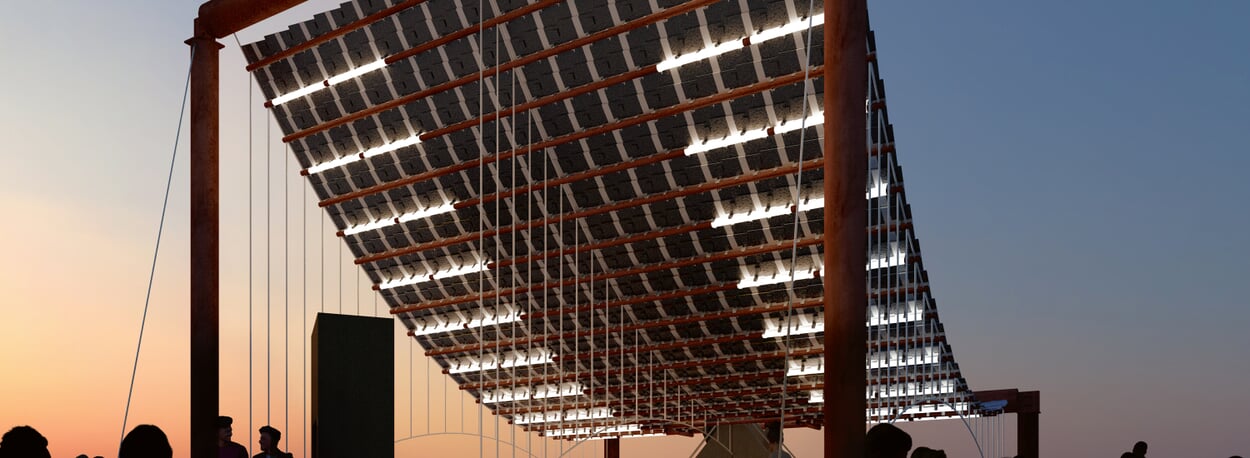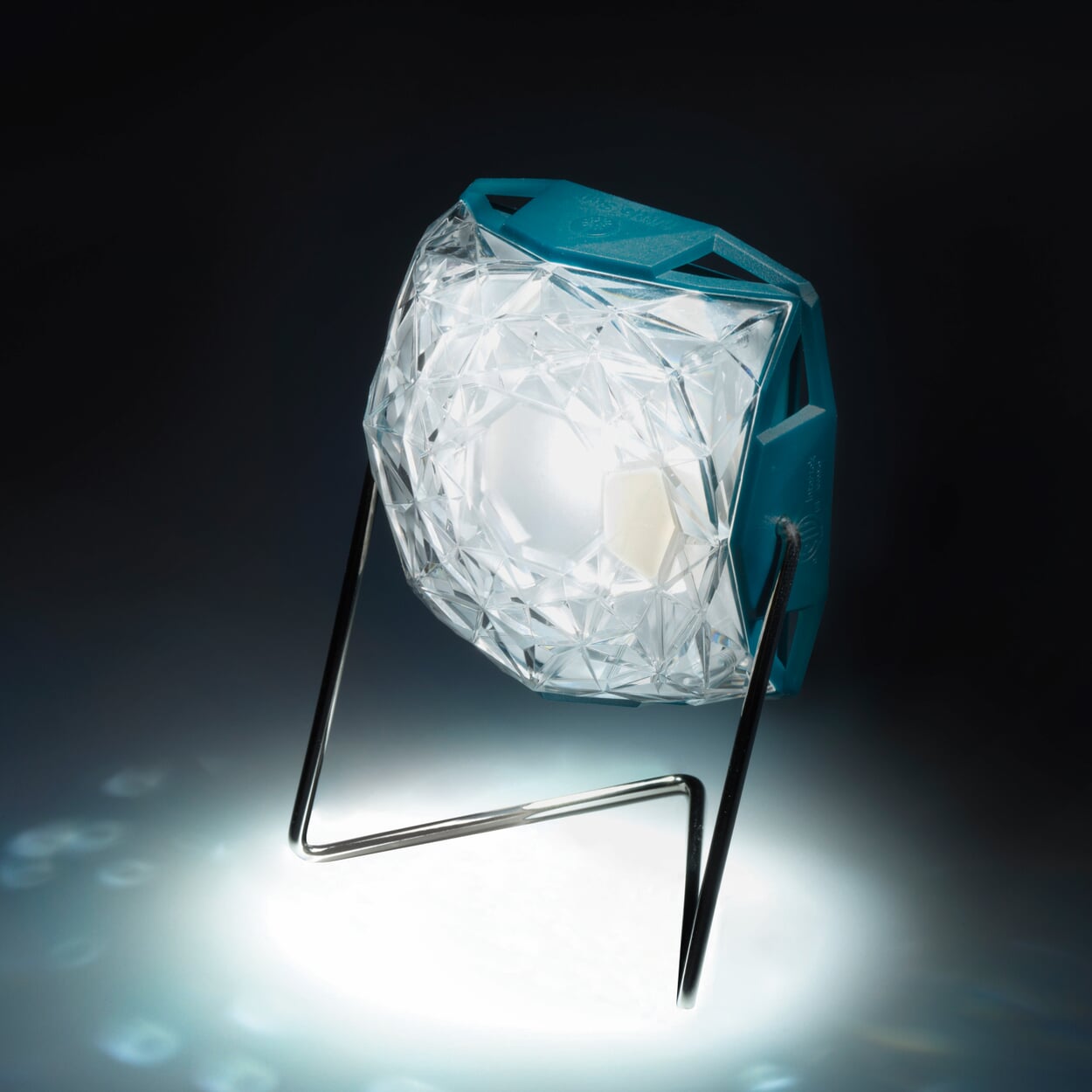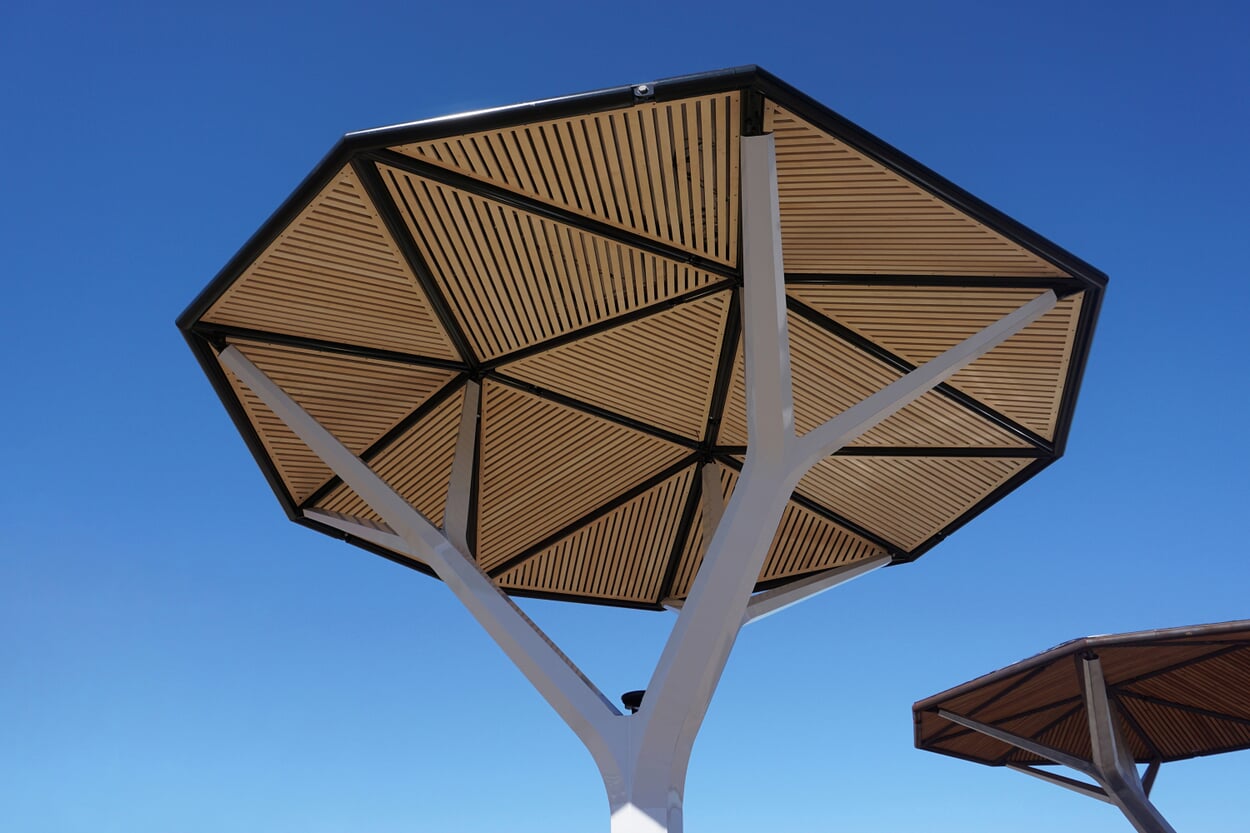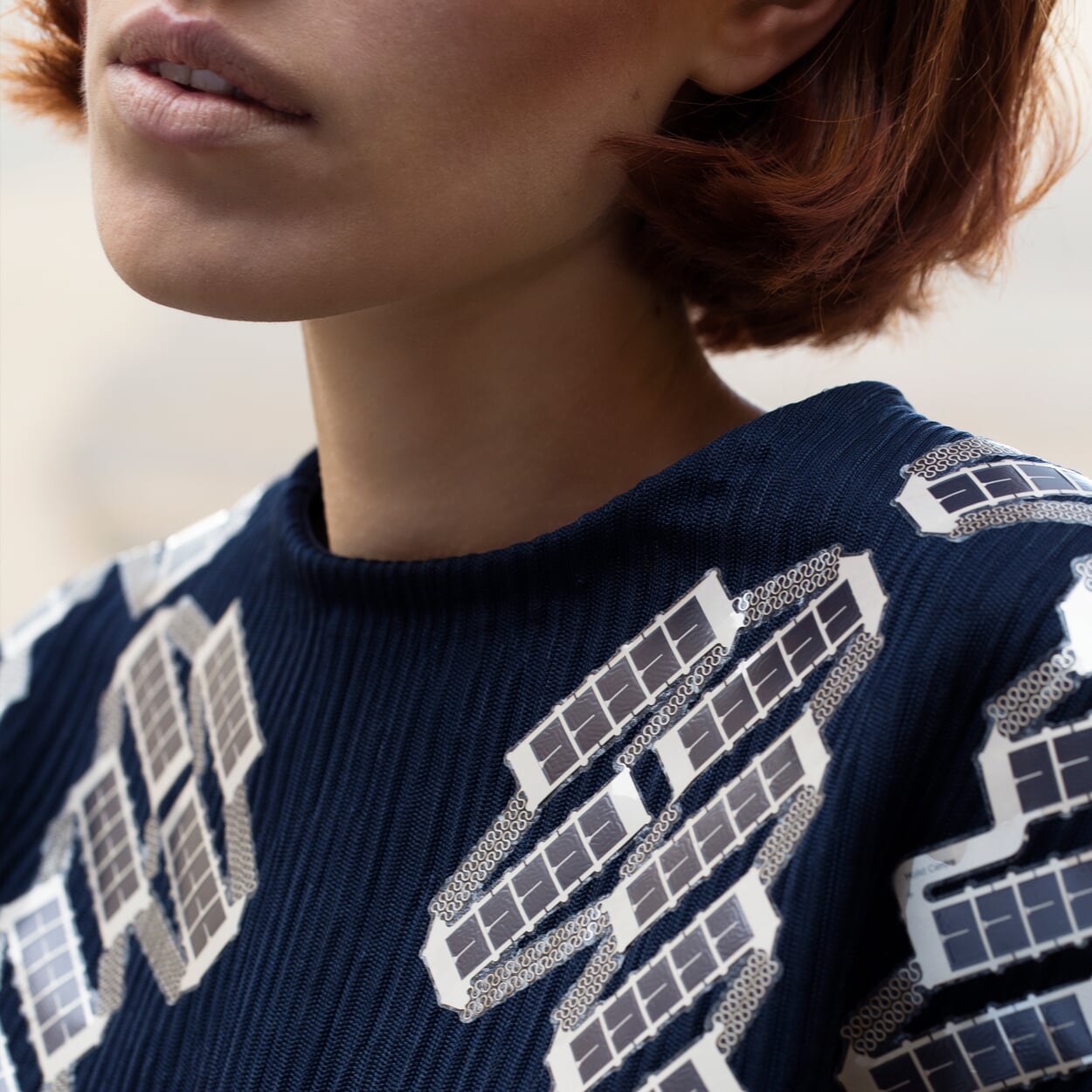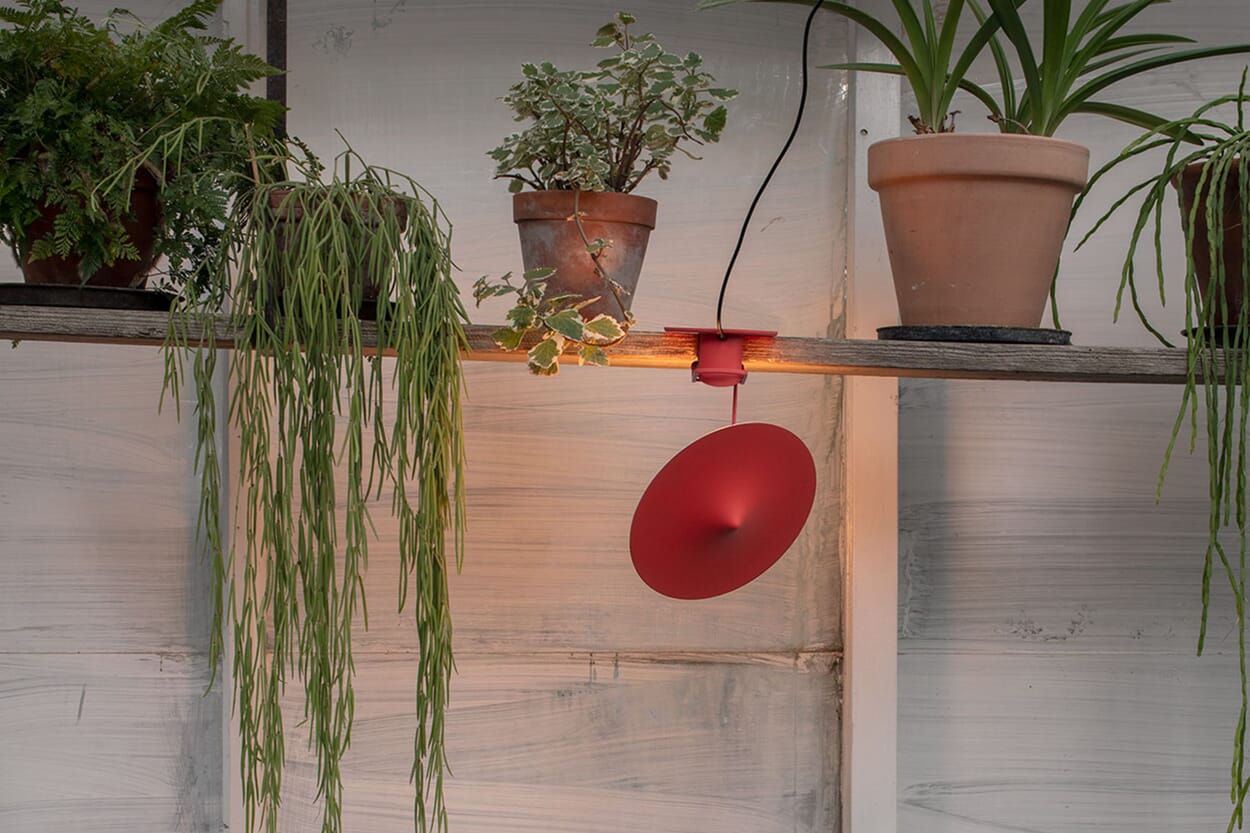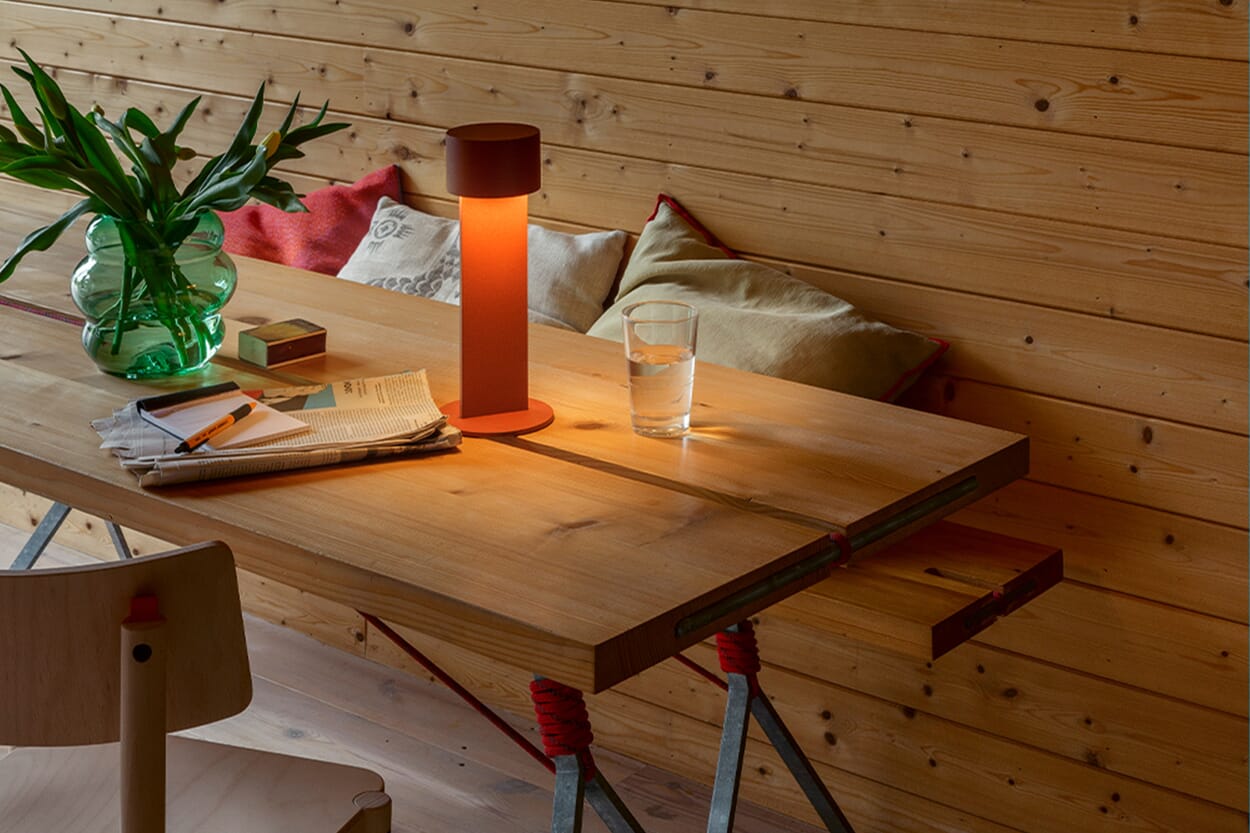Let it shine!
Designers such as Marjan van Aubel, Samuel Wilkinson and Pauline van Dongen show that solar technology can do much more than generate electricity. They design lamps, tables and shirts that charge cell phones, bring light into the dark and are, of course, well designed.
Text: Claudia Simone Hoff
Just how important it is to become independent of fossil fuels was revealed with great force last year. Yet there are already future-proof and sustainable alternatives with integrated solar technology that are both functional and aesthetically suitable for everyday use - including mobile batteries and lights, electric blankets and entire architectural structures.
It has been ten years since Olafur Eliasson and Frederik Ottesen founded Little Sun, a company that develops sustainable solar products. So far, they have launched three luminaires with additional functions, which are primarily intended for the 1.1 billion people worldwide who do not have a constant power supply. The idea behind this is that a one-off investment in a solar light to generate light is significantly cheaper, more environmentally friendly and less dangerous in the long term than using fossil fuels such as petroleum. So far there are three products: "Little Sun Original" in the shape of a striking yellow sun is a compact, solar-powered light with a carrying strap. It is joined by "Little Sun Charge" with an integrated LED for charging cell phones and other small electrical devices and the LittleSun Diamond table lamp (see page 134), which shines for up to five hours in its brightest mode.
While the Little Sun project has a strong social component, Marjan van Aubel wants to integrate solar design into our everyday lives. The Dutch designer with her own studio in Amsterdam is a pioneer when it comes to designing with solar technology. She develops products and temporary architecture in which solar technology is either integrated almost invisibly or functions as an explicit design element - and at the same time creates added value such as the generation of electricity. In addition, van Aubel organizes exhibitions and writes books on the complex field of solar technology, architecture and design. Her best-known design is probably the "Sunne" pendant luminaire, which is independent of electricity. Placed in front of the window, it stores the energy of the sun's rays in an integrated battery. The luminaire can imitate lighting moods such as sunrise, sunlight and sunset.
Another solar expert is Pauline van Dongen. The Dutch designer primarily creates items of clothing with integrated solar cells, such as the "Solar Shirt", but she has also developed products for the home. During a workshop with Bureau Ruimtekoers, she created "Zonderzetter", a ceramic solar tile that serves as a coaster. A solar panel and an LED are integrated into the surface so that the drink placed on it is effectively illuminated from below. Less playful, but just as surprising, is a textile fabric with woven-in thin-film solar cells. In contrast to rigid solar panels on roofs and fields, "Zonnestof" is intended to enable direct and tactile contact with the sun as an energy source, according to the designer. Like Marjan van Aubel, her aim is to raise awareness of renewable energies. Both are behind the initiative The Solar Biennale, which took place in Rotterdam last fall. Until recently, the exhibition "The Energy Show - Sun, Solar and Human Power" was also on display at Het Nieuwe Instituut in Rotterdam.
As in product design, the possibilities of designing with solar technology remain largely untapped in architecture. A design by Samuel Wilkinson Studio, produced by the American start-up Solar, shows how the two can come together. "E-Cacia" is a shelter whose LED-lit roof spans seven meters and is reminiscent of an African acacia tree. The sun's rays, from which the shelter is intended to provide protection, are converted into electricity with the help of solar panels. Michiel Raaphorst from V8 Architects also believes that it is time for a solar revolution, for the transition from pure solar technology to solar design with individual application options. For Dutch Design Week 2022 and as part of the Solar Biennale, he and Marjan van Aubel developed the "Solar Pavilion" with a roof made of 380 colored solar panels resting on a steel structure. Visitors could climb up between the panels via scaffolding and experience the power of the sun first-hand.
Images: © V8 Architects; ©Samual Wilkinson Studio; Lieselotte Fleur; Jana Buch
Lighting
More on the subject of light
Northern lights! The Wästberg lighting brand sets standards: with well-designed, repairable products by renowned designers.
Lights on, all good? Not quite: If you want to illuminate your balcony, patio and garden, you should also think about your animal neighbors.
Rods, cones, lens, retina - for a long time, biologists agreed that human vision was understood. Today we know that our eyes do much more than their obvious visual tasks.

